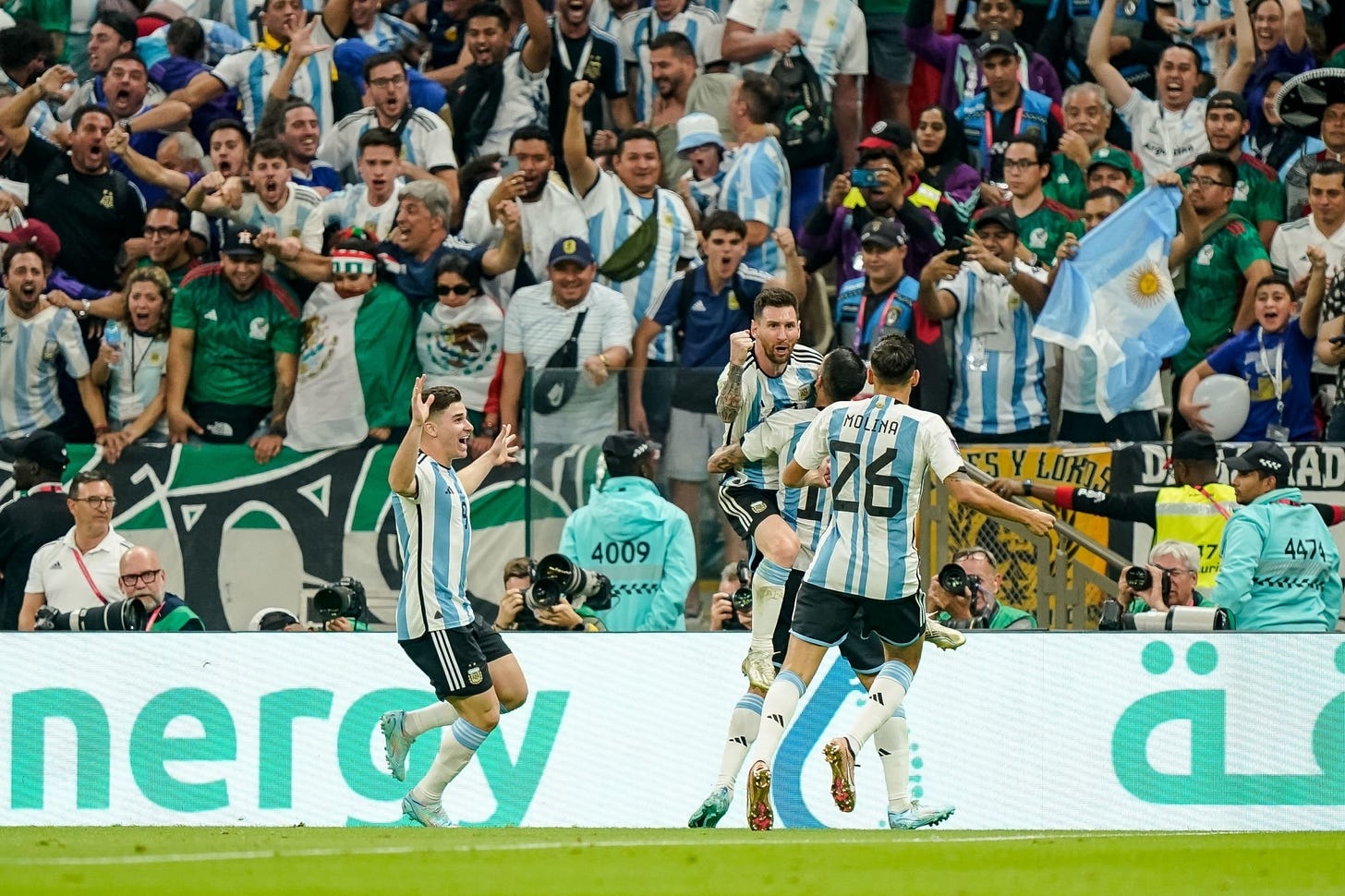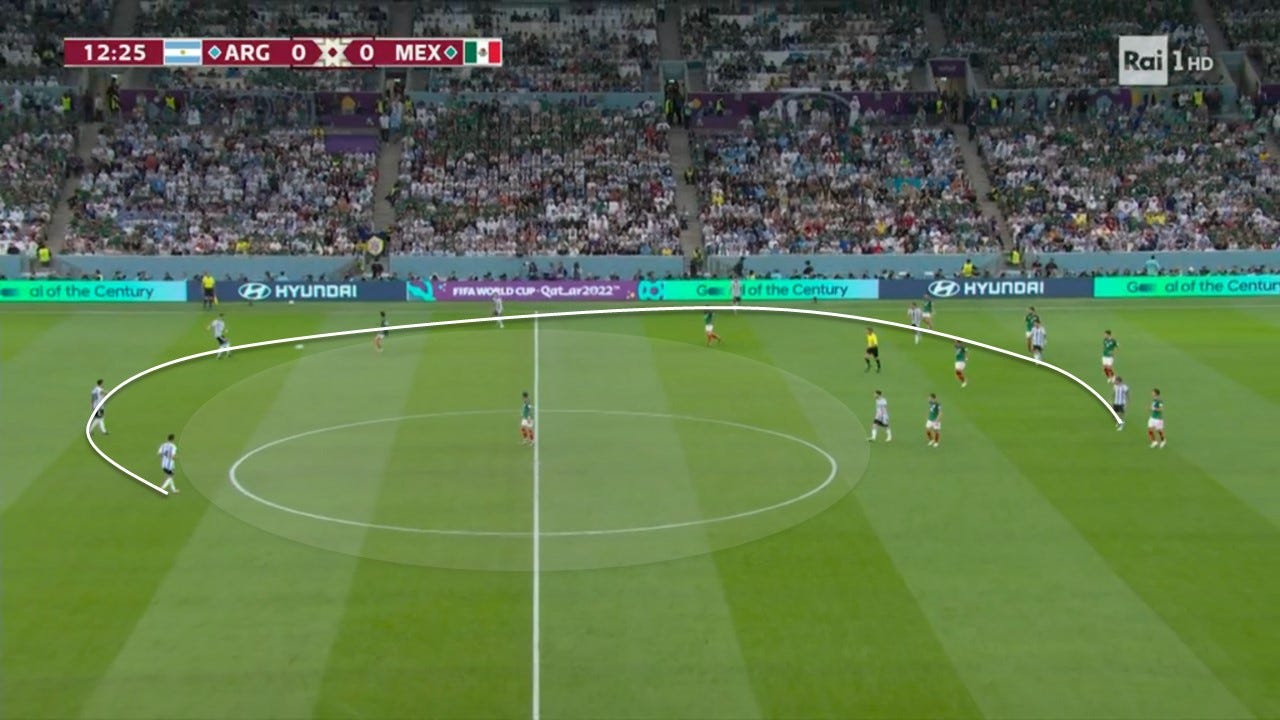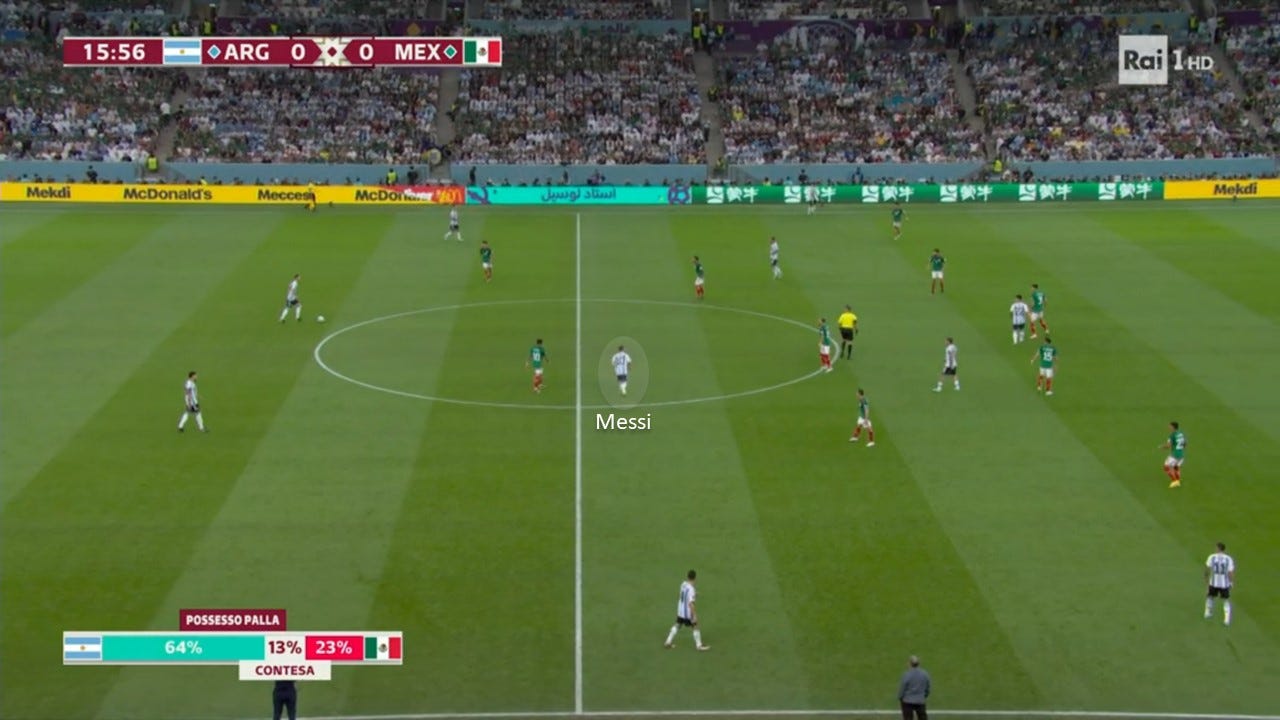This was kind of a win-or-go-home match for Argentina. After the surprising loss against Saudi Arabia, Messi and co. had a boulder on their shoulders which became even heavier after Poland’s win in the afternoon against Renard’s boys. To go from the main favorites for the final victory to the big disappointment of the competition would have been difficult for anyone, especially for a group led by Lionel Messi who knows a thing or two about big disappointments with la Albiceleste. The first 60 minutes of Argentina vs Mexico perfectly depicted the burden that Scaloni’s players were playing with: they looked tense, frightened, and clueless. Especially Messi. When Messi looks inspire and confident, Argentina as a whole feel so. When Messi’s light looks feeble, so does Argentina’s.
For those who have seen Scaloni's Argentina over the past year and a half, for example during Copa América or in the game played in June against Italy, the team seen in these first two games will seem like nothing but a very distant relative. A collective that used to put emphasis on the quality of individuals, central density and the combinations of its best players, has become an unrecognizable version characterized by a U shape, with the defensive midfielder dropping between defenders in the classic Salida Lavolpiana, but with no one going then to occupy that vacated space, basically creating a 3+0 structure with a huge central gap that forces the centre-backs to play on the flanks where opponents can comfortably create density - especially Mexico with their 5-3-2 shape - to limit the risks. Due to this, Messi was basically invisible in the first half. He touched the ball so little that he had to came deep to receive it in the defensive midfielder position, finally occupying that space and creating a 3+1.
For 60 minutes the possession phase of Argentina consists of a sort of pendulum swinging from left-back to right-back passing through the centre-backs, without any attempt of verticalization also due to the total immobility of the players from the midfield up. De Paul in particular has looked unrecognizable in every facet of the game from the version seen last summer.
Everybody would have predicted a goalless draw considering how the match evolved: Argentina were paralyzed and Mexico seemed content with the 0-0; but then, Argentina’s soul decides to take the reins of the situation. Messi receives a ball from the right by Di Maria, he’s completely alone, he raises his head for less then a millisecond, everybody’s heaert stops beating for a moment, Messi shoots from his favorite position, just like he did in 2011 in the UCL Final against Man United, he shoots the ball in the same bottom corner of the net where Ochoa can’t stop it. Goal.
Scaloni for the final 30 minutes opts for a more conservative approach, subbing in an extra centre-back and lining up with a 5-3-2. Among others, Enzo Fernandez (who probably deserves a starting spot) comes off the bench and finds a magnificent goal à-la Del Piero for the final 2-0, but nobody is going to remember Fernandez’s. We all going to remember when Argentina were drowning and Messi kept them aflot with his magical left foot.
On October 13, 1806, the German philosopher Georg Wilhelm Friedrich Hegel had an encounter with Napoleon. He then wrote:
“I have seen the Spirit of the world, on horseback, concentrating on one point, stretching over the world and dominating it”.
Tonight, On November 26, 2022, we all have seen Messi, the Spirit of Argentina, and in a way, the Spirit of football as a whole.






